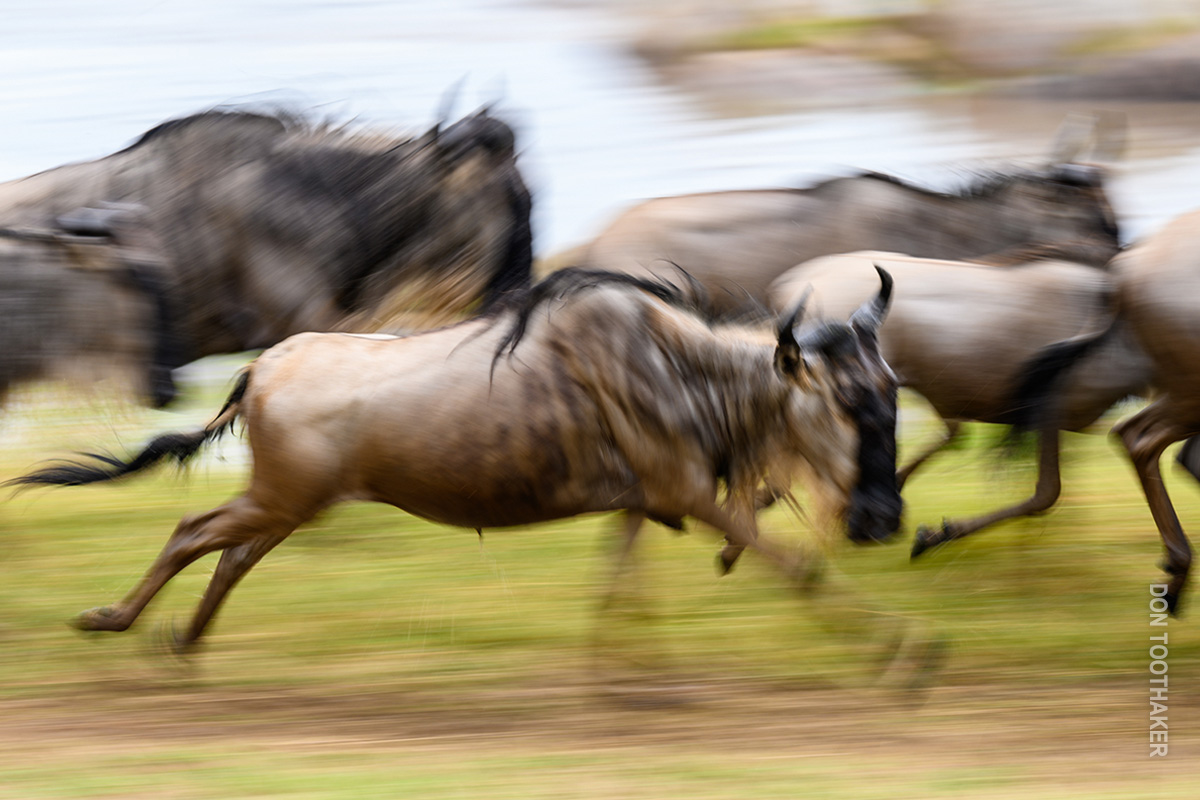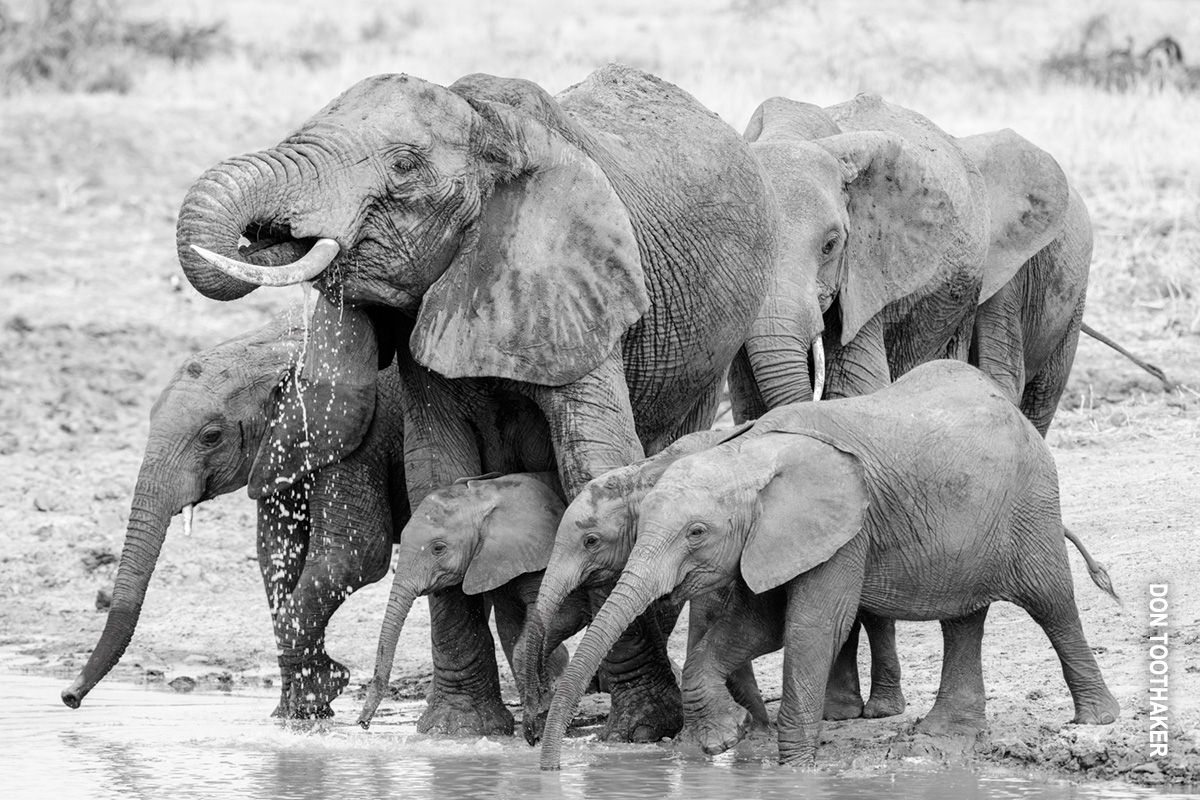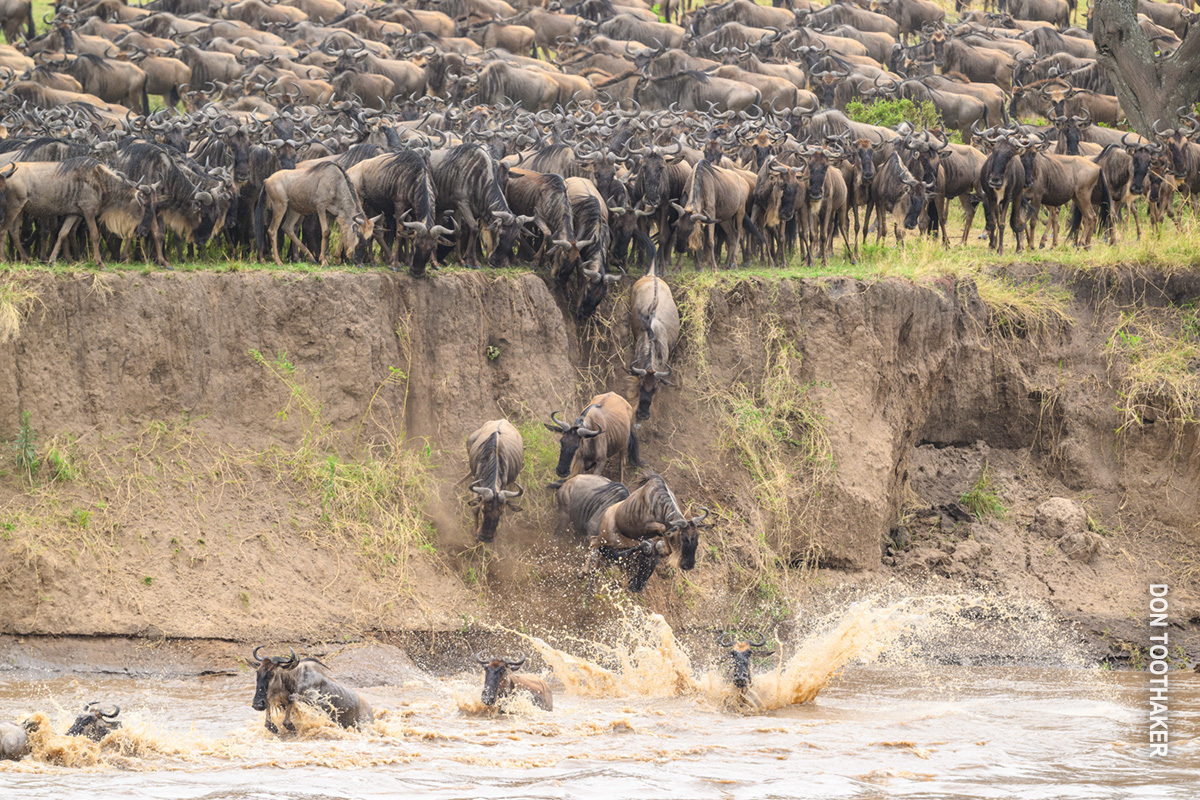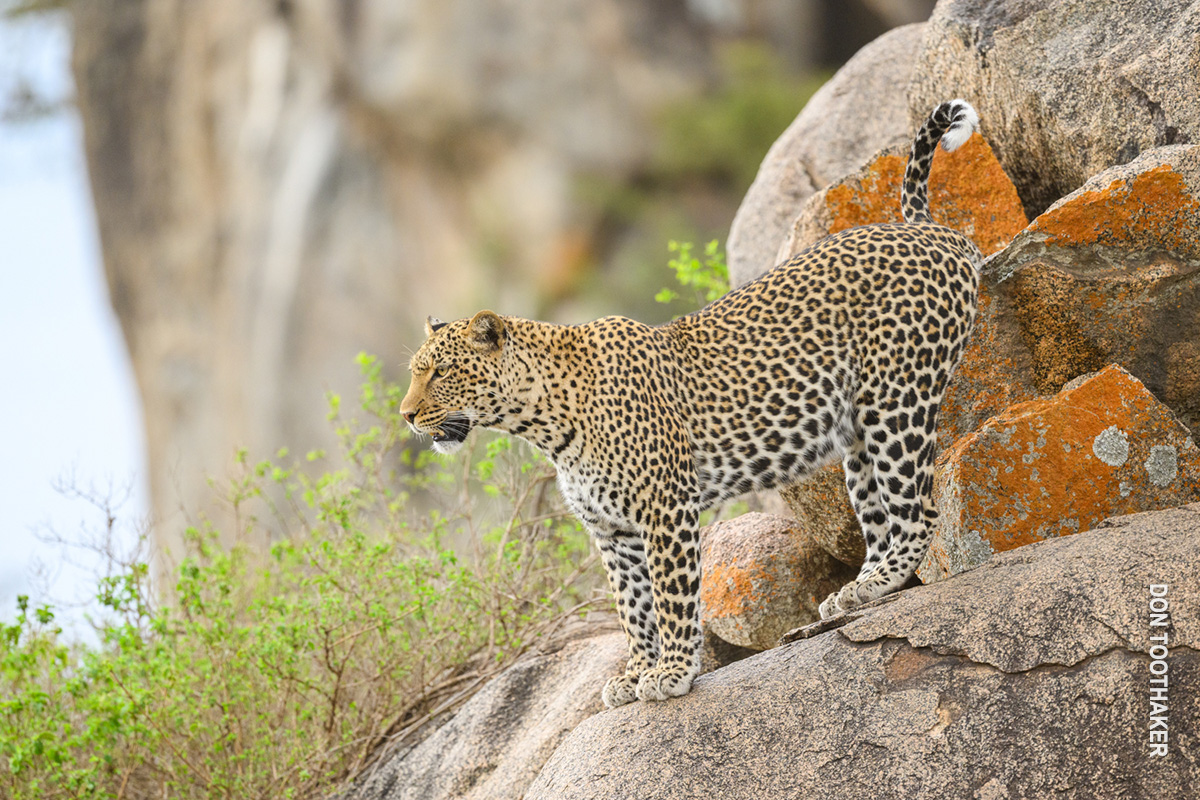3 Stunning Wildlife Photos from Hunt’s Photo Safari (And the Stories Behind Them)

Ever dreamt of photographing the drama of a thousand galloping wildebeest, or a baby elephant frolicking in mud? Don Toothaker will help; he recently led his third Hunt’s photo safari into the Serengeti, and he’s excited to share his knowledge!
Don has been a professional photographer for over 20 years and a photography instructor for over 10. He’s been helping photographers of all skill levels capture incredible shots on safari–while capturing a few of his own.
We sat down with Don to hear the stories behind his top 3 photos from his most recent safari, and the advice he’d give photographers looking for similar shots.
1. The Tarangire Watering Hole

It was day one of our safari. No one knew what to expect. We had just entered Tarangire National Park when our guide Hashim said, “Everyone get your camera ready. Wildlife can pop up anywhere.”
Truer words could not have been spoken.
Within 10 minutes, we found zebras, giraffes, wildebeest, warthogs and more gathered around a huge watering hole. We were in disbelief–this was our very first encounter with wildlife on the safari!
As if the scene wasn’t photogenic enough, a family of 19 elephants arrived. The young elephants charged into the water and splashed, then tested how far they could throw water from their trunks. The adults kept an eye on them. You could really sense the family bonds.
It was playful. It was funny. It was fun. Photographing the young ones rolling in the dirt, or running between their parents’ legs, was so sweet. We were focused on getting the best shots we could, but at the same time, we couldn’t help but laugh.
📸 Don’s Advice
One of the hardest things about group shots is trying to get as many subjects in focus as possible. I reminded everyone to get as much depth of field as they could, which meant shooting at a smaller aperture opening–F11, F13. However, that chokes the light out, and your shutter speed gets slower, so you have to compensate by increasing your ISO.
Thomson provides bean bags in the Land Rovers that are a huge help in stabilizing your long lens. In any case, I recommend practicing your shots at home or in a nearby park to ensure even greater success on your once-in-a-lifetime safari.
2. The Mara River Crossing

We were excited to see the famous Great Migration crossings along the Mara River. The sun was rising over tens of thousands of wildebeest when we arrived. We had barely settled in when two of them separated from the mass, walked down to the bank and hopped in.
Thousands followed.
Hashim positioned us perfectly for great photos, and we spent all morning watching, experiencing and photographing the wildebeest hurling themselves into the river. It was unbelievable.
I had a fixed telephoto lens, which meant I couldn’t zoom. As a result, I focused on taking these tight shots of the bank. I got some photos where the wildebeests were climbing down and flinging themselves into the river.
I’m happy with this photo because I’ve never seen anything like a river crossing. There’s no guarantee I’ll ever see it again. It’s more than a photograph to me–It’s a memory that will last a lifetime.
📸 Don’s Advice
With scenes like river crossings, I recommend going back and forth between tight shots and wider perspectives. We all get a little carried away with, “How close can I make it look like I was?” The story of the wildlife doesn’t necessarily benefit from that.
I also recommend understanding the technical aspects that make a sharp photo. If there’s an animal running and jumping, you need a faster shutter speed, which you can achieve by opening the aperture and increasing the ISO.
And most importantly, put your camera down from time to time and take it in. You’re witnessing the greatest migration on the planet. It’s best not to get stuck behind the shutter.
3. Leopard

The leopard is my favorite animal in Africa–aside from the elephant. One day in the central Serengeti, we were riding by some kopjes and Hashim spotted one.
Now, Hashim knows wildlife. He predicted this leopard’s behavior just by watching it. By the time the leopard had jumped from his rock to prowl through the bushes, Hashim had already positioned us for the best photography angles. In fact, Hashim had positioned us so perfectly that we still had a great angle when the leopard perched on a rock 50 feet away.
Other companies were desperately trying to reposition their vehicles to get even a glimpse of what we saw. Thanks to the expertise of our Thomson guide Hashim, we got these incredibly intimate and personal photos.
Hands down, one of my most incredible, breathtaking moments on safari, and one of my favorite wildlife photographs ever.
📸 Don’s Advice
Be patient. The wildlife does what it wants. They have no schedule. It’s a good opportunity to be versatile. Change lenses and make sure you have an extra battery and memory card ready to go.
What Does Wildlife Photography Mean to Don?
“An African safari is arguably the pinnacle of wildlife photography,” Don said. “The enormity of the animals, the proximity, the stealth, the behaviors, the beauty, the ruggedness; an African safari is every photographer’s dream.
“It’s an amazing feeling when everyone comes home and posts their photos on social media. The pride I feel as their photography leader surpasses everything. It inspires me to do this over and over again.”
Learn more about photography-specific safaris with Thomson

